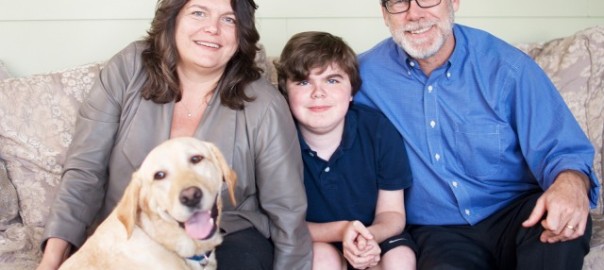Duchenne Patient Defies Odds by Living to 30

Duchenne muscular dystrophy (DMD) is an inherited disease affecting 1 in every 3,600 live-born male infants. The condition is associated with progressive degradation of muscles and weakness that worsens quickly. Boys with DMD have a defective gene and lack of a protein called dystrophin in their muscles.
Duchenne muscular dystrophy is inherited in a way that women are not affected. However, a woman can be a carrier of the gene without displaying any symptoms. The male offspring of a carrier have a 50 percent chance of having DMD. The female offspring have a 50 percent chance of being carriers. Although a family history of the disorder is a known risk factor, Duchenne muscular dystrophy often occurs in boys with no known history in the family.
The condition is usually diagnosed before age 6, but may be detected as early as infancy. Boys with DMD display easy fatigability, muscle weakness, frequent falls, and trouble climbing stairs or getting up from the floor. By age 12, most are confined to a wheelchair. By age 20, heart disease and breathing difficulties predominate, often requiring assisted ventilation. Associated learning disability and intellectual limitations often accompany the disorder. The average life expectancy of patients with Duchenne muscular dystrophy is about 25 years.
There is currently no cure for Duchenne muscular dystrophy, and treatment is provided with the intention of improving the quality of life. Now, gene therapy and stem cell therapy are proving to be beacons of hope for boys affected by DMD.
Ryan Benton received a diagnosis of Duchenne muscular dystrophy at age 3. It was predicted that this Wichita, Kansas resident would not live beyond his late teens or early 20s. When his health seriously declined at age 22 in 2009, his family sought allogeneic adult stem cell therapy. Because laws prohibit this treatment in the United States, Benton traveled to Panama City, where Dr. Niel H. Riordan, Ph.D., and his team gave him his first treatment at the Stem Cell Institute.
Shortly following the first treatment, Benton felt stronger and was able to breathe better. There were no associated adverse effects. Over the next five years, Benton made a total of seven trips to Panama for more treatments before the FDA finally granted approval for stem cell therapy in his hometown in Kansas. The application was made under the investigational new drug compassionate use category. The approval was conditional, limited only to Benton, permitting a maximum of two treatments every year for a maximum of three years.
Although Benton’s muscle mass and lung capacity were found to improve following each treatment, the effect of increased physical strength and easier breathing dwindled three to four months following the treatment. Approval for one additional treatment per year was granted to Benton by the FDA in January 2016.
Benton was the first patient with Duchenne muscular dystrophy to receive FDA approval for adult stem cell therapy in the United States. His promising results have encouraged the regulatory agency to approve these life-saving treatments for another boy who has shown similar benefits from treatments received in Panama. Benton turned 30 this year, defying the odds and paving the way for other boys with Duchenne muscular dystrophy to receive stem cell treatment in the United States.
References:
2. http://www.nytimes.com/health/guides/disease/duchenne-muscular-dystrophy/overview.html
Image courtesy of http://dailybruin.com/


